
Picture this: An integrated, world-class transit system that competes with solo commuting by being user-focused, affordable, frequent, and reliable across the region. If this existed, would you use it or would you still drive?
It’s difficult to imagine not driving in suburban Marin, but for anyone lucky enough to have traveled, you know that there are places where - even in rural areas - mass transit is available and well used, and biking can be a way of life.
In August’s newsletter, Sustainable Marin will explore our transportation options for reducing greenhouse gasses through interviews with Seamless Bay Area’s Ian Griffith and Adina Levin. Let’s take a look at their vision for the future and learn about the regional efforts to get us there. Also, Sustainable Marin Board Member, Marilyn Price, shares her story on living without a car into her 80s!
Enjoy!
Picture this: An integrated, world-class transit system that competes with solo commuting by being user-focused, affordable, frequent, and reliable across the region. If this existed, would you use it or would you still drive?
It’s difficult to imagine not driving in suburban Marin, but for anyone lucky enough to have traveled, you know that there are places where - even in rural areas - mass transit is available and well used, and biking can be a way of life.
In August’s newsletter, Sustainable Marin will explore our transportation options for reducing greenhouse gasses through interviews with Seamless Bay Area’s Ian Griffith and Adina Levin. Let’s take a look at their vision for the future and learn about the regional efforts to get us there. Also, Sustainable Marin Board Member, Marilyn Price, shares her story on living without a car into her 80s!
Enjoy!
ELECTRIFY YOUR RIDE WITH RIDE AND DRIVE CLEAN
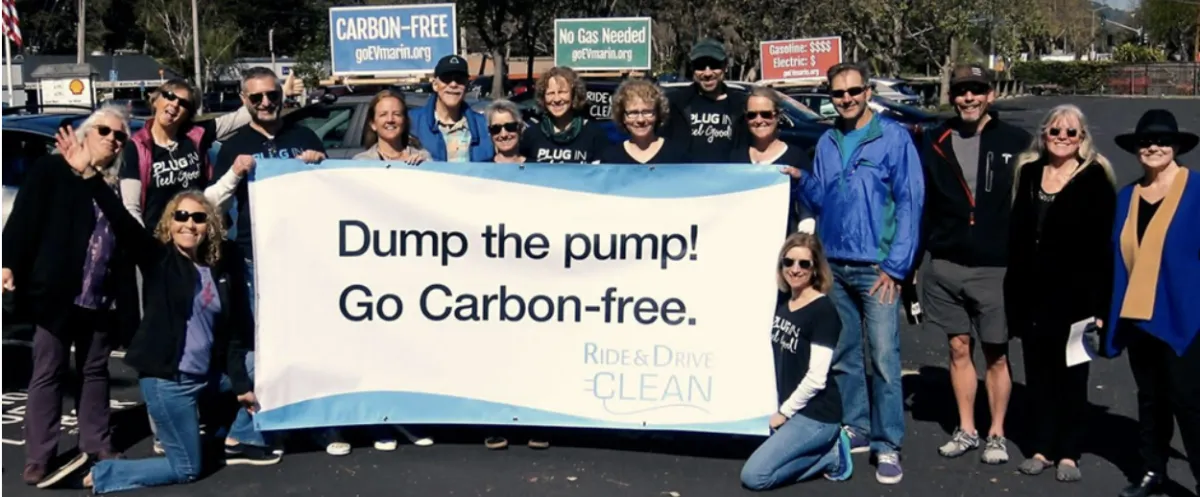
The extended Cool the Earth/Ride and Drive Clean team - Photo Credit: Ride and Drive Clean
Electric vehicles (EVs) and e-bikes are vital for a sustainable future. California leads the way, and Marin County’s nonprofit, Cool the Earth is at the forefront of this exciting transition. Through their Ride and Drive Clean Campaign, Cool the Earth is ensuring that everyone can benefit from the shift to EVs. Transitioning to EVs and e-bikes is a powerful step toward reducing our collective carbon footprint. Consumers now have an incredible opportunity to make a significant environmental impact by embracing electric transportation.
Choosing the perfect EV or e-bike is an exciting journey, and Ride and Drive Clean makes it a breeze. Whether you're deciding between a battery electric vehicle (BEV) or a plug-in hybrid electric vehicle (PHEV), or exploring the many available incentives, Ride and Drive Clean offers all the support you need. Through their engaging EV and e-bike expos and informative monthly webinars, Ride and Drive Clean guides you through every step.
Today's EVs offer impressive ranges of 200 to 350 miles, and long-distance travel has never been easier, thanks to the ever-expanding network of EV charging stations across the nation.
Affordability is another area where Ride and Drive Clean shines. Through partnerships with organizations like Cartelligent and eMotion Autos, Ride and Drive Clean offers EV Discount Campaigns that make electric vehicle ownership more accessible than ever. These programs have helped hundreds of people save thousands of dollars on EVs.
Ride and Drive Clean also engages priority communities most impacted by air pollution and climate change. Their programs illuminate the path to big savings with income-based incentives — up to $20,000 on a new or pre-owned EV!
For those ready to embrace the future of transportation and save big, signing up for Ride and Drive Clean’s EV Discount Campaign is a fantastic first step. Together, we can drive toward a cleaner, greener future for all.
ELECTRIFY YOUR RIDE WITH RIDE AND DRIVE CLEAN

The extended Cool the Earth/Ride and Drive Clean team - Photo Credit: Ride and Drive Clean
Electric vehicles (EVs) and e-bikes are vital for a sustainable future. California leads the way, and Marin County’s nonprofit, Cool the Earth is at the forefront of this exciting transition. Through their Ride and Drive Clean Campaign, Cool the Earth is ensuring that everyone can benefit from the shift to EVs. Transitioning to EVs and e-bikes is a powerful step toward reducing our collective carbon footprint. Consumers now have an incredible opportunity to make a significant environmental impact by embracing electric transportation.
Choosing the perfect EV or e-bike is an exciting journey, and Ride and Drive Clean makes it a breeze. Whether you're deciding between a battery electric vehicle (BEV) or a plug-in hybrid electric vehicle (PHEV), or exploring the many available incentives, Ride and Drive Clean offers all the support you need. Through their engaging EV and e-bike expos and informative monthly webinars, Ride and Drive Clean guides you through every step.
Today's EVs offer impressive ranges of 200 to 350 miles, and long-distance travel has never been easier, thanks to the ever-expanding network of EV charging stations across the nation.
Affordability is another area where Ride and Drive Clean shines. Through partnerships with organizations like Cartelligent and eMotion Autos, Ride and Drive Clean offers EV Discount Campaigns that make electric vehicle ownership more accessible than ever. These programs have helped hundreds of people save thousands of dollars on EVs.
Ride and Drive Clean also engages priority communities most impacted by air pollution and climate change. Their programs illuminate the path to big savings with income-based incentives — up to $20,000 on a new or pre-owned EV!
For those ready to embrace the future of transportation and save big, signing up for Ride and Drive Clean’s EV Discount Campaign is a fantastic first step. Together, we can drive toward a cleaner, greener future for all.
CALIFORNIA ACTIONS

From The Climate Center: SB-59 aims to unlock the potential for California’s millions of electric vehicles to shore up the electric grid, power homes during outages, and lower energy bills for Californians. The bill would authorize the California Air Resources Board to require that electric vehicles (EVs) sold in California have bidirectional capability - meaning that you can use your car to power your home. SB-59 will be heard next in the Assembly Appropriations Committee in August. Tell your Assembly member to vote YES on SB-59 HERE
CALIFORNIA ACTIONS

From The Climate Center: SB-59 aims to unlock the potential for California’s millions of electric vehicles to shore up the electric grid, power homes during outages, and lower energy bills for Californians. The bill would authorize the California Air Resources Board to require that electric vehicles (EVs) sold in California have bidirectional capability - meaning that you can use your car to power your home. SB-59 will be heard next in the Assembly Appropriations Committee in August. Tell your Assembly member to vote YES on SB-59 HERE
THINKING ABOUT ELECTRICAL VEHICLE (EV) CHARGING FOR YOUR ORGANIZATION?
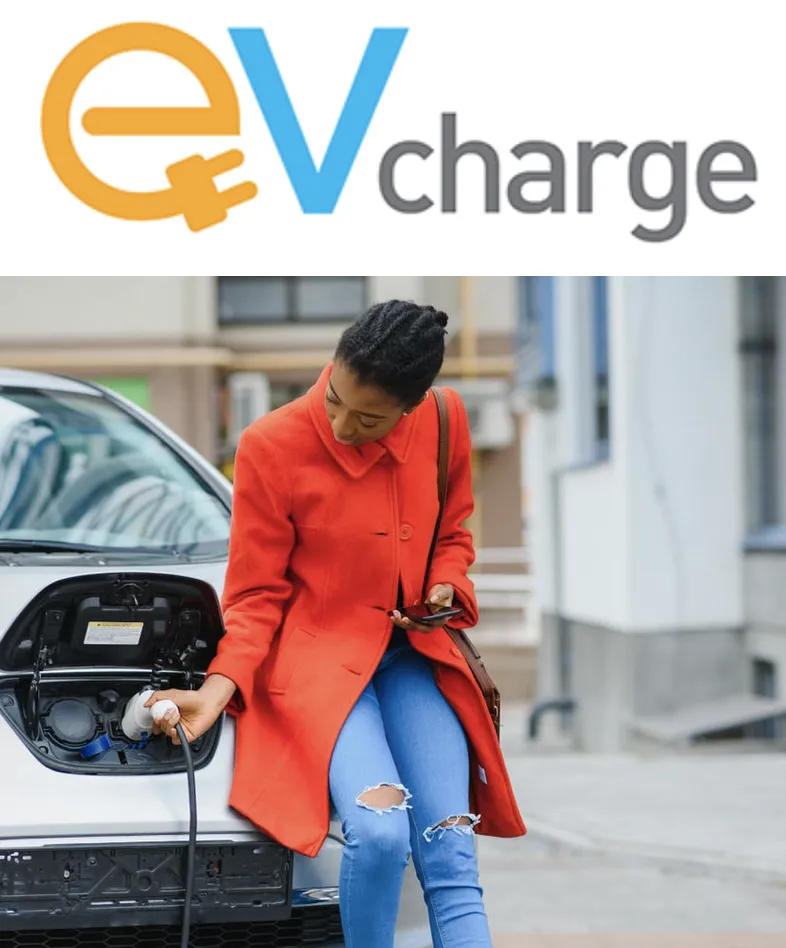
PG&E is providing EV charging station incentives at multifamily housing units, not-for-profit organizations and small businesses.
Install Level 2 AC chargers at no cost to the property owner for sites located in a priority community. A cost share is required for sites located outside of a priority community.
The incentive also provides site-specific operations and maintenance plans and covers two years of networking and software fees.
More than 5,000 properties and businesses across all industries have chosen ChargePoint EV charging solutions. We’ll support all projects that qualify for the incentive each step of the way, including helping you with the program application.
THINKING ABOUT ELECTRICAL VEHICLE (EV) CHARGING FOR YOUR ORGANIZATION?

PG&E is providing EV charging station incentives at multifamily housing units, not-for-profit organizations and small businesses.
Install Level 2 AC chargers at no cost to the property owner for sites located in a priority community. A cost share is required for sites located outside of a priority community.
The incentive also provides site-specific operations and maintenance plans and covers two years of networking and software fees.
More than 5,000 properties and businesses across all industries have chosen ChargePoint EV charging solutions. We’ll support all projects that qualify for the incentive each step of the way, including helping you with the program application.
83 AND CAR FREE - AN INTERVIEW WITH MARILYN PRICE
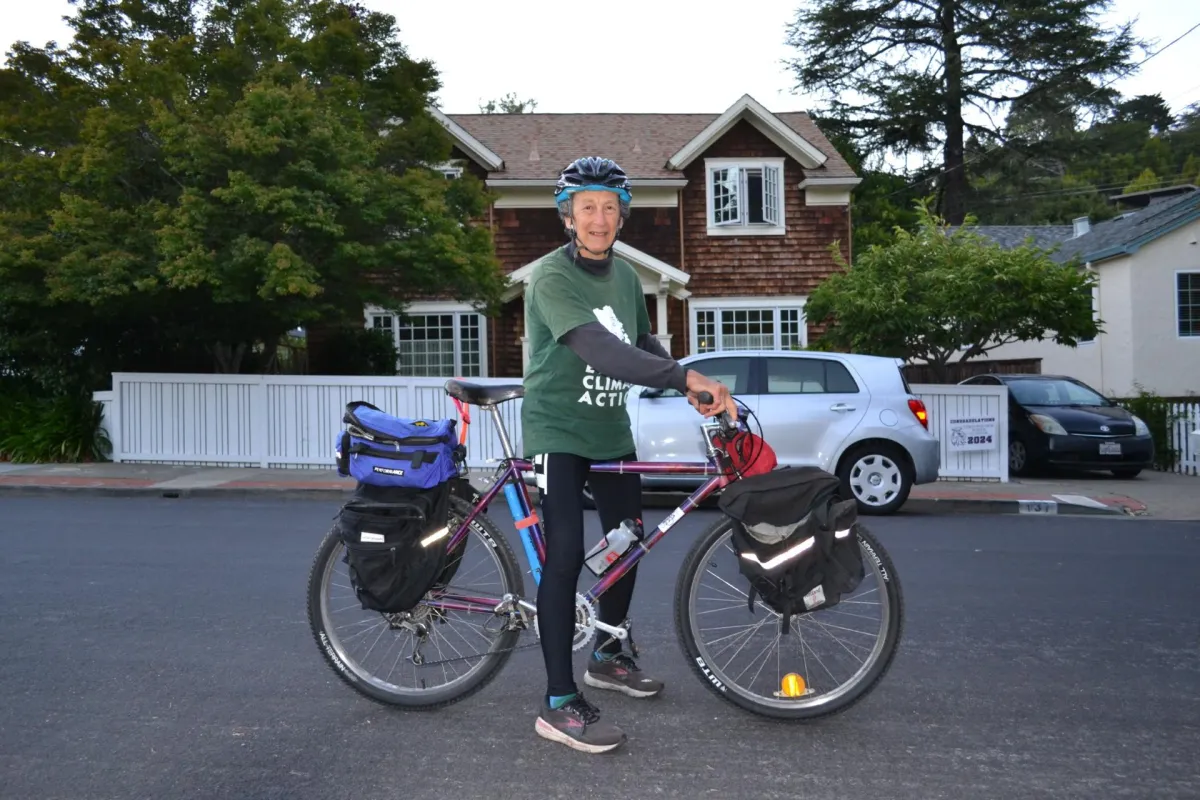
Eighty-three-year-old Marilyn Price lives without a car and rides her bike or takes transit wherever she goes. As the founder of the highly acclaimed Trips for Kids, located in San Rafael, she has been an avid cyclist most of her life. She only briefly owned a car when her children were small.
In 1986, Marilyn got the idea to take underprivileged youth on mountain bike rides. She had studied social work, and had been inspired in college to become an environmentalist in alignment with her lifelong love of bicycling. Then, while sitting on top of Mt. Tam looking at the City, she was inspired. “Wow, how neat if I could bring the kids [from] down there, up here.”
Things happened fast after that. Marilyn was able to get some bikes donated by various manufacturers and used her connections with Canal Community Alliance to connect her with the kids. She and some colleagues took her first cohort biking to Point Reyes. More bikes were donated and Trips for Kids was born.
By the time she left, they had 140 chapters nationwide with 45 strong ones. Trips for Kids provides an outlet for urban youth all over the country to experience the joy of cycling and getting out in nature. It also includes an Earn-a-Bike program, as well as the Recyclery, which refurbishes bikes and sells the bikes and bike parts at an affordable price while simultaneously funding the program.
After retiring from Trips for Kids, Marilyn focused on environmental activism. “My concern for the environment has been lifelong, I was motivated by books like The Population Bomb," she explained. She is involved with many groups like 350 Marin, Sierra Club, Elders for Climate Action, and of course, serves on the board for Sustainable Marin, where she focuses on water conservation. Marilyn produces a weekly Action Alert newsletter, which compiles calls to action, articles, and events, which are posted the Sustainable Mill Valley website.
While recognizing that living without a car isn’t for everyone, she does recommend that people give it a try. “You do have to plan ahead,” she recommends, “and I always check the weather report. It’s very important to shift away from personal cars, even electric cars. With electric bikes, biking is now much more of an option for more people. People need to live lighter on the planet. We need to concentrate on public transit, biking (especially e-bikes), and 15-minute cities (where everything you need is within a 15-minute walk, bike or transit ride)." She discovered this detail, ironically, only after she left her job. Learning the bus routes is a good first step to car free living.
Marilyn walks her talk. Or maybe ‘bikes her talk’? She has dramatically reduced energy and water consumption for herself and her family, and, at 83, she shows that even in low density Marin, you can live without a car.
83 AND CAR FREE - AN INTERVIEW WITH MARILYN PRICE

Eighty-three-year-old Marilyn Price lives without a car and rides her bike or takes transit wherever she goes. As the founder of the highly acclaimed Trips for Kids, located in San Rafael, she has been an avid cyclist most of her life. She only briefly owned a car when her children were small.
In 1986, Marilyn got the idea to take underprivileged youth on mountain bike rides. She had studied social work, and had been inspired in college to become an environmentalist in alignment with her lifelong love of bicycling. Then, while sitting on top of Mt. Tam looking at the City, she was inspired. “Wow, how neat if I could bring the kids [from] down there, up here.”
Things happened fast after that. Marilyn was able to get some bikes donated by various manufacturers and used her connections with Canal Community Alliance to connect her with the kids. She and some colleagues took her first cohort biking to Point Reyes. More bikes were donated and Trips for Kids was born.
By the time she left, they had 140 chapters nationwide with 45 strong ones. Trips for Kids provides an outlet for urban youth all over the country to experience the joy of cycling and getting out in nature. It also includes an Earn-a-Bike program, as well as the Recyclery, which refurbishes bikes and sells the bikes and bike parts at an affordable price while simultaneously funding the program.
After retiring from Trips for Kids, Marilyn focused on environmental activism. “My concern for the environment has been lifelong, I was motivated by books like The Population Bomb," she explained. She is involved with many groups like 350 Marin, Sierra Club, Elders for Climate Action, and of course, serves on the board for Sustainable Marin, where she focuses on water conservation. Marilyn produces a weekly Action Alert newsletter, which compiles calls to action, articles, and events, which are posted the Sustainable Mill Valley website.
While recognizing that living without a car isn’t for everyone, she does recommend that people give it a try. “You do have to plan ahead,” she recommends, “and I always check the weather report. It’s very important to shift away from personal cars, even electric cars. With electric bikes, biking is now much more of an option for more people. People need to live lighter on the planet. We need to concentrate on public transit, biking (especially e-bikes), and 15-minute cities (where everything you need is within a 15-minute walk, bike or transit ride)." She discovered this detail, ironically, only after she left her job. Learning the bus routes is a good first step to car free living.
Marilyn walks her talk. Or maybe ‘bikes her talk’? She has dramatically reduced energy and water consumption for herself and her family, and, at 83, she shows that even in low density Marin, you can live without a car.
TALKING TRANSIT
WHAT DOES THE FUTURE LOOK LIKE?
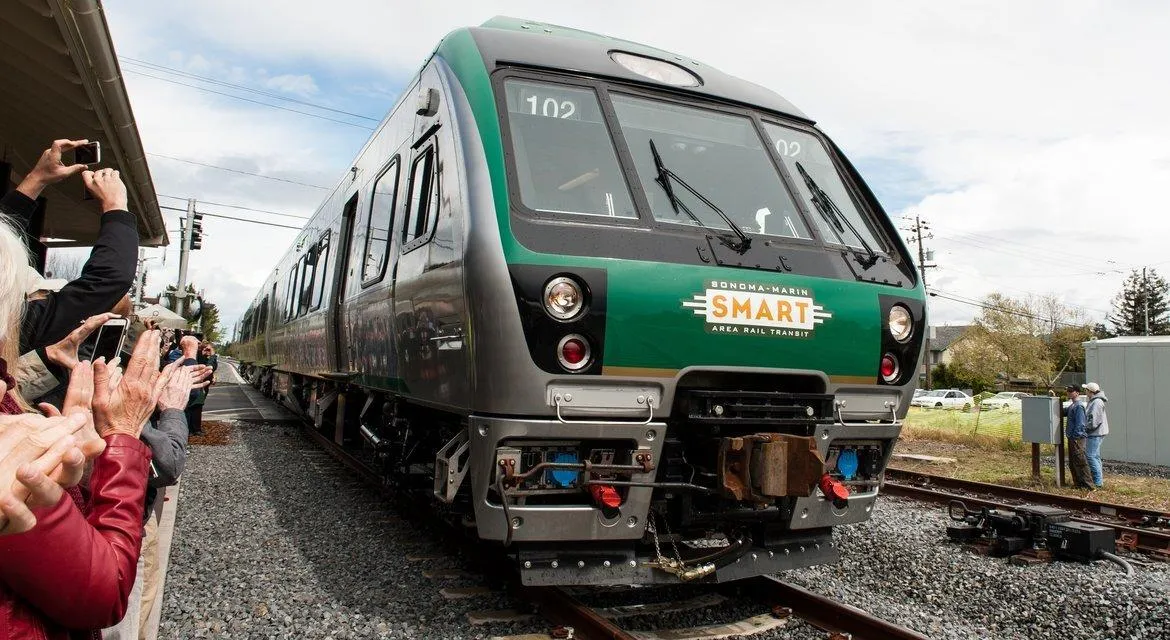
The advent of the automobile was the end of the line for many trains. Now, many Bay Area commuters solo commute even though a robust commuter system has been in place. That changed when the recent pandemic required office workers to discover that they could work from home. Transit agencies suffered and State and Federal funds flowed in to keep mass transit alive. Now those funds have dried up and transit agencies are facing a ‘fiscal cliff’--dangerous shortfalls in funding because of low ridership. This cliff has the potential to decimate mass transit throughout the region.
The Metropolitan Transit Agency (MTC) – the regional transportation organization – formed a Blue Ribbon Committee during Covid to determine how to use federal funds and recreate the future of transit, with these changing conditions in mind. That committee created the Transit Transformation Action Plan (TAP) which aims to recover and improve the Bay Area's underperforming, uncoordinated public transit system through initiatives like fare integration, schedule coordination, and better accessibility.
While the TAP was aspirational, funding will take getting 9 counties and 27 transit agencies to cooperate and think regionally. A recent attempt at a regional transportation funding measure stalled due to disagreements over funding allocation and agency consolidation provisions.
MTC has set up a new Select Committee to develop a framework for legislation in 2025, addressing concerns around local tax reauthorizations and fair geographic funding distribution. Key needs for a successful measure include sufficient operating funds to improve and coordinate service, strengthen regional coordination and include some road maintenance funding for voter appeal.
Adina Levin, executive director of Seamless Bay Area, and a member of the select committee, has also chaired a series of successive advisory bodies, including the Customer Advisory Committee. She has presided over and/or participated in a number of efforts to implement the TAP.
“Even before the pandemic, Bay Area public transportation was under-performing, so ridership was not keeping up with the population and we had less ridership per capita than some other well performing Metropolitan areas in North America and around the world,” she explained. “There are a couple of root causes there, including the fact that the Bay Area Public Transportation System has been very uncoordinated with minimal coordination on things like fares and schedules and signs, and that makes the system harder to use. Another root cause was the concentration on white collar commute trips. Transit systems around the world that did a better job of supporting a greater variety of trips and riders were more resilient to the effects of the pandemic.”
MTC has initiated a number of pilot programs to explore addressing some of these issues. These include fare integration for transferring to other transit providers, providing an all-agency transit pass for organizations including housing developments, colleges and employers - leading to a 40% ridership increase in the first phase of the pilot - and a wayfinding program to provide universal signage to better inform riders. But the nuts and bolts of providing a truly integrated system that is convenient and frequent is elusive without an infusion of funding.
In 2024, a bill by California Senator Scott Wiener was introduced to allow MTC to put a multi-county measure on the ballot in 2026. According to Levin, it was stalled due to disputes over agency merger provisions and geographic funding allocation.
“There were concerns from some counties about impacting the ability to reauthorize local taxes,” she said.
Senator Wiener and co-author Senator Aisha Wahab chose to put on hold the effort for enabling legislation in order for MTC to establish the Select Committee for 2025 Legislation to work on parameters for renewed legislation that would have broader consensus. The committee includes legislators, MTC commissioners, stakeholders with the goal of addressing local tax re-authorization concerns and fair geographic funding.
From Levin’s perspective, a successful measure needs sufficient operating funds to improve and coordinate service. In her opinion, the committee should look to strengthen network management for continued coordination, including some road maintenance funding to appeal to voters while avoiding highway expansions that conflict with climate goals.
Currently, there is some progress on greater schedule coordination between Bay Area transit agencies. Agencies are committing to common schedule change dates, but this is lacking details on which routes/hubs are actually being coordinated. Levin feels they need to publicly highlight specific coordination successes. Find more details here:
Transit 2050+ Connected Network Plan
.
TALKING TRANSIT
WHAT DOES THE FUTURE LOOK LIKE?

The advent of the automobile was the end of the line for many trains. Now, many Bay Area commuters solo commute even though a robust commuter system has been in place. That changed when the recent pandemic required office workers to discover that they could work from home. Transit agencies suffered and State and Federal funds flowed in to keep mass transit alive. Now those funds have dried up and transit agencies are facing a ‘fiscal cliff’--dangerous shortfalls in funding because of low ridership. This cliff has the potential to decimate mass transit throughout the region.
The Metropolitan Transit Agency (MTC) – the regional transportation organization – formed a Blue Ribbon Committee during Covid to determine how to use federal funds and recreate the future of transit, with these changing conditions in mind. That committee created the Transit Transformation Action Plan (TAP) which aims to recover and improve the Bay Area's underperforming, uncoordinated public transit system through initiatives like fare integration, schedule coordination, and better accessibility.
While the TAP was aspirational, funding will take getting 9 counties and 27 transit agencies to cooperate and think regionally. A recent attempt at a regional transportation funding measure stalled due to disagreements over funding allocation and agency consolidation provisions.
MTC has set up a new Select Committee to develop a framework for legislation in 2025, addressing concerns around local tax reauthorizations and fair geographic funding distribution. Key needs for a successful measure include sufficient operating funds to improve and coordinate service, strengthen regional coordination and include some road maintenance funding for voter appeal.
Adina Levin, executive director of Seamless Bay Area, and a member of the select committee, has also chaired a series of successive advisory bodies, including the Customer Advisory Committee. She has presided over and/or participated in a number of efforts to implement the TAP.
“Even before the pandemic, Bay Area public transportation was underperforming, so ridership was not keeping up with the population and we had less ridership per capita than some other well performing Metropolitan areas in North America and around the world,” she explained. “There are a couple of root causes there, including the fact that the Bay Area Public Transportation System has been very uncoordinated with minimal coordination on things like fares and schedules and signs, and that makes the system harder to use. Another root cause was the concentration on white collar commute trips. Transit systems around the world that did a better job of supporting a greater variety of trips and riders were more resilient to the effects of the pandemic.”
MTC has initiated a number of pilot programs to explore addressing some of these issues. These include fare integration for transferring to other transit providers, providing an all-agency transit pass for organizations including housing developments, colleges and employers - leading to a 40% ridership increase in the first phase of the pilot - and a wayfinding program to provide universal signage to better inform riders. But the nuts and bolts of providing a truly integrated system that is convenient and frequent is elusive without an infusion of funding.
In 2024, a bill by California Senator Scott Wiener was introduced to allow MTC to put a multi-county measure on the ballot in 2026. According to Levin, it was stalled due to disputes over agency merger provisions and geographic funding allocation.
“There were concerns from some counties about impacting the ability to reauthorize local taxes,” she said.
Senator Wiener and co-author Senator Aisha Wahab chose to put on hold the effort for enabling legislation in order for MTC to establish the Select Committee for 2025 Legislation to work on parameters for renewed legislation that would have broader consensus. The committee includes legislators, MTC commissioners, stakeholders with the goal of addressing local tax re-authorization concerns and fair geographic funding.
From Levin’s perspective, a successful measure needs sufficient operating funds to improve and coordinate service. In her opinion, the committee should look to strengthen network management for continued coordination, including some road maintenance funding to appeal to voters while avoiding highway expansions that conflict with climate goals.
Currently, there is some progress on greater schedule coordination between Bay Area transit agencies. Agencies are committing to common schedule change dates, but this is lacking details on which routes/hubs are actually being coordinated. Levin feels they need to publicly highlight specific coordination successes. Find more details here: Transit 2050+ Connected Network Plan.
BAY AREA SEAMLESS TRANSIT
IS IT POSSIBLE?
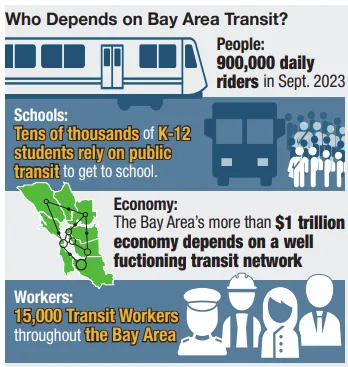
Seamless Bay Area began circulating its vision for a coordinated transit system before the pandemic hit. Then co-executive director Ian Griffiths came to the Bay Area from Toronto’s transit system, where he helped to develop a more coordinated system in that metropolitan area. He hoped to bring that vision here.
When the lock-down happened and transit ridership plummeted, the opportunity opened up to begin regional discussion of transforming our 27 transit agencies into a more coordinated system. The Seamless vision was initially at the center of those discussions.
A key question in current discussions is how tightly to focus on the ‘fiscal cliff’ that could result in service cuts. Seamless continues to urge more focus on transforming the whole system.
“Focusing too much on the ‘fiscal cliff’ doesn't excite public support.” Griffiths stresses, “The vision of an affordable, transformed system resonates better in polling.”
Seamless had done its own polling and found that the public wants something better than before. He also bemoans the way operators and elected officials retreat into their silos. “Fiscal issues amplify regional divides, while a vision of improved access unites people.”
Griffiths wants agencies to look at those elements that will actually make transit more attractive. “More operations funding is needed to increase frequency,” he asserts. “We also need reforms for regional coordination and integrated fares/schedules.” Griffiths points to his own experience in Toronto, where, over a number of years, governments have been successful in authorizing new funding for transit with a clear vision for building an improved, integrated, and seamless system.
Switzerland also offers an inspiring example. “Switzerland built public confidence through national/regional coordination policies linked to funding,” he said. “They did this in increments, making small investments over time that amounted to major changes. Toronto and Vancouver are more recent examples of pursuing integrated fares and services. Having a positive, connected network vision strengthens the case for investment.”
Griffiths is leaving his post at Seamless Bay Area to join the consulting firm of CPCS which has experience with regional transit strategy and integration projects. While he will step down from his participation on MTC’s committees, he will continue to serve on the State Transit Committee. Perhaps one day he will be one of the people designing our new Bay Area Transit System.
BAY AREA SEAMLESS TRANSIT
IS IT POSSIBLE?

Seamless Bay Area began circulating its vision for a coordinated transit system before the pandemic hit. Then co-executive director Ian Griffiths came to the Bay Area from Toronto’s transit system, where he helped to develop a more coordinated system in that metropolitan area. He hoped to bring that vision here. When the lock-down happened and transit ridership plummeted, the opportunity opened up to begin regional discussion of transforming our 27 transit agencies into a more coordinated system. The Seamless vision was initially at the center of those discussions.
A key question in current discussions is how tightly to focus on the ‘fiscal cliff’ that could result in service cuts. Seamless continues to urge more focus on transforming the whole system.
“Focusing too much on the ‘fiscal cliff’ doesn't excite public support.” Griffiths stresses, “The vision of an affordable, transformed system resonates better in polling.”
Seamless had done its own polling and found that the public wants something better than before. He also bemoans the way operators and elected officials retreat into their silos. “Fiscal issues amplify regional divides, while a vision of improved access unites people.”
Griffiths wants agencies to look at those elements that will actually make transit more attractive. “More operations funding is needed to increase frequency,” he asserts. “We also need reforms for regional coordination and integrated fares/schedules.”
Griffiths points to his own experience in Toronto, where, over a number of years, governments have been successful in authorizing new funding for transit with a clear vision for building an improved, integrated, and seamless system.
Switzerland also offers an inspiring example. “Switzerland built public confidence through national/regional coordination policies linked to funding,” he said. “They did this in increments, making small investments over time that amounted to major changes. Toronto and Vancouver are more recent examples of pursuing integrated fares and services. Having a positive, connected network vision strengthens the case for investment.”
Griffiths is leaving his post at Seamless Bay Area to join the consulting firm of CPCS which has experience with regional transit strategy and integration projects. While he will step down from his participation on MTC’s committees, he will continue to serve on the State Transit Committee. Perhaps one day he will be one of the people designing our new Bay Area Transit System.
WHAT DO YOU WANT THE BAY AREA'S FUTURE TO LOOK LIKE?
Better transit? Cleaner air? More affordable housing?
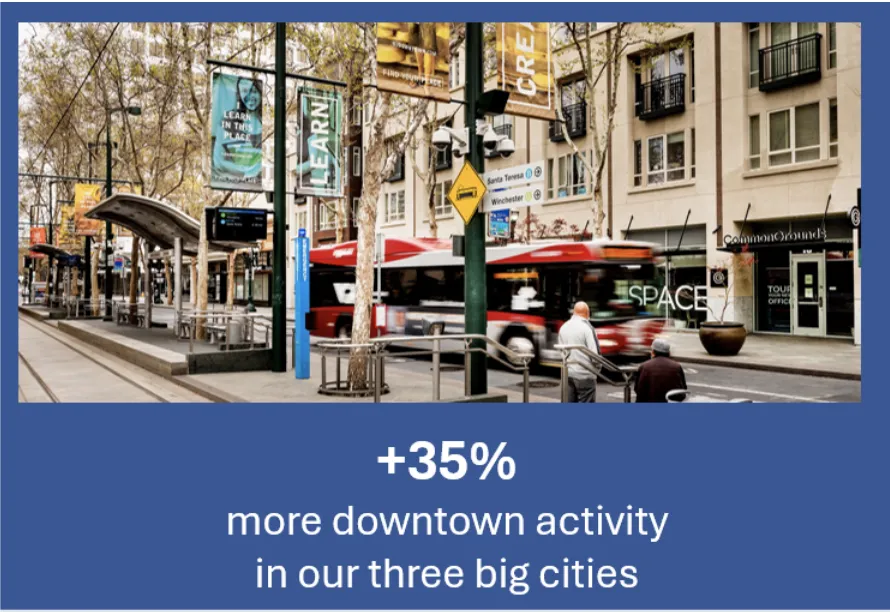
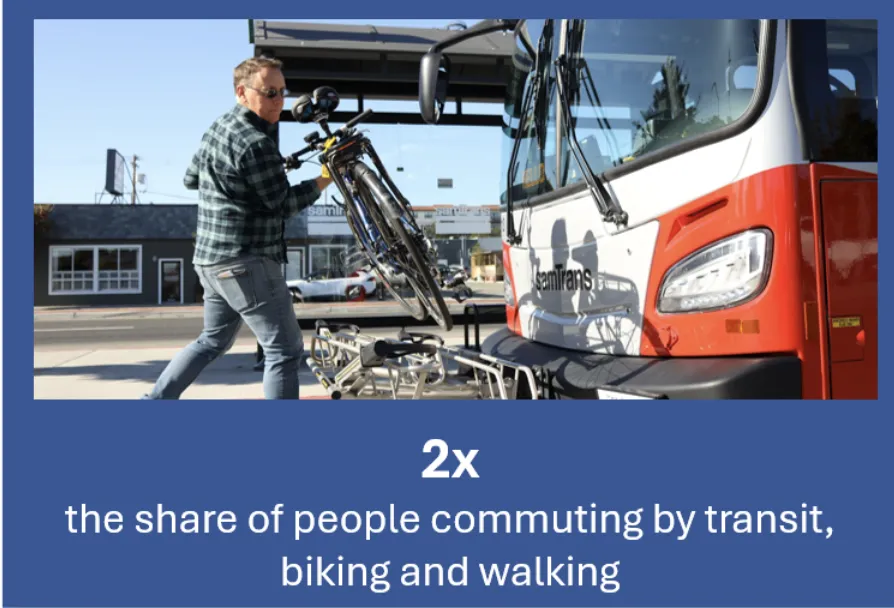

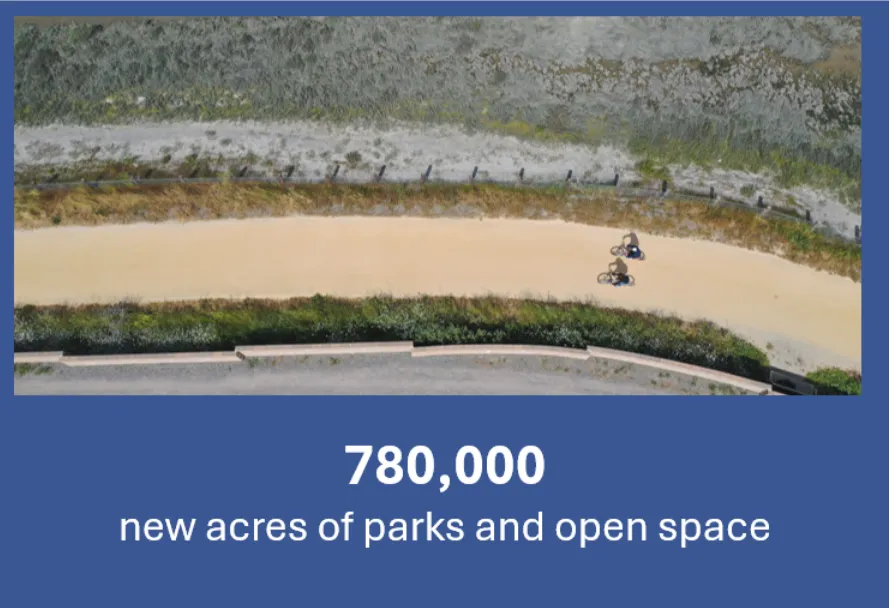
The Metropolitan Transportation Commission (MTC) and the Association of Bay Area Governments (ABAG) are seeking your input to help inform the development of Plan Bay Area 2050+, a limited and focused update to the Bay Area’s long-range regional plan.
The Draft Blueprint – essentially a “first draft” of the plan – outlines strategies for creating a more affordable, connected, diverse, healthy and vibrant Bay Area for all by 2050.
The survey also seeks your comments on the Draft Transit 2050+ Network, which outlines how to make Bay Area public transit faster and more frequent at all times of day, connecting more communities by bus, train or ferry.
The deadline to participate in the survey is Monday, September 9, 2024.
WHAT DO YOU WANT THE BAY AREA'S FUTURE TO LOOK LIKE?
Better transit? Cleaner air? More affordable housing?
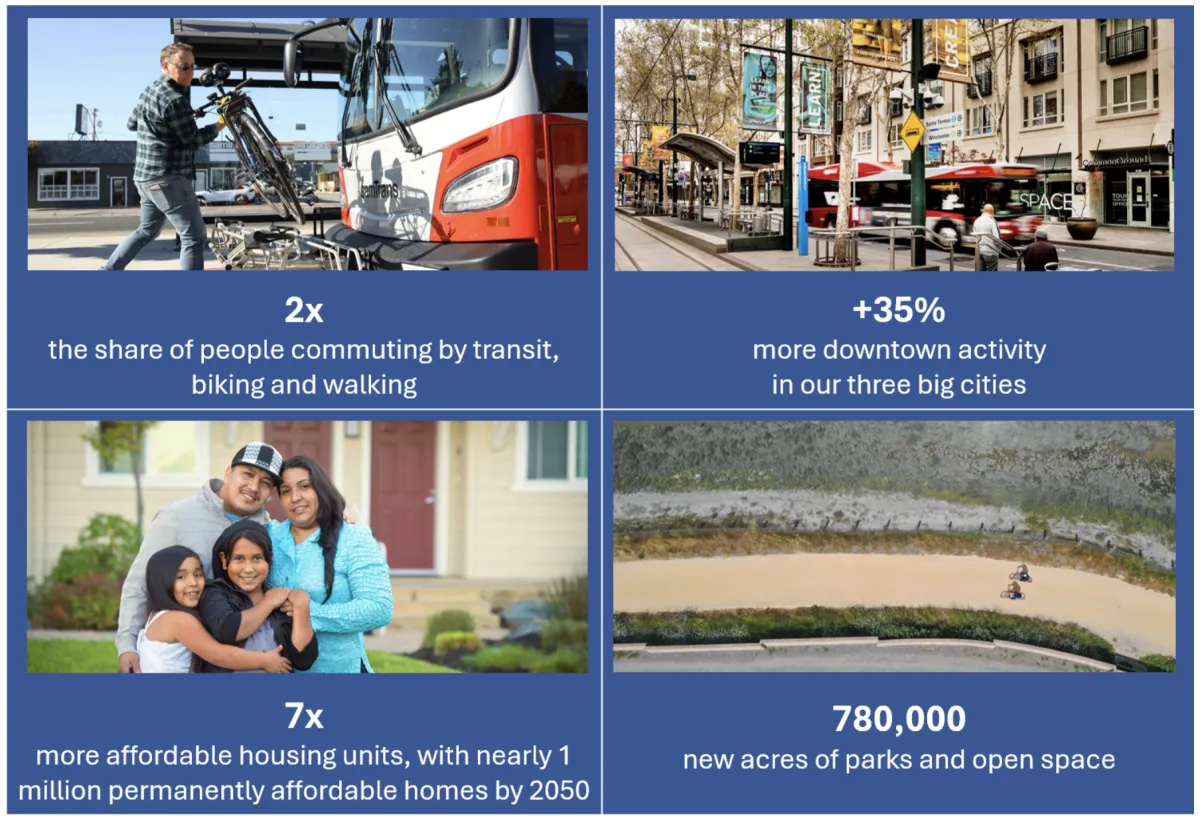
The Metropolitan Transportation Commission (MTC) and the Association of Bay Area Governments (ABAG) are seeking your input to help inform the development of Plan Bay Area 2050+, a limited and focused update to the Bay Area’s long-range regional plan.
The Draft Blueprint – essentially a “first draft” of the plan – outlines strategies for creating a more affordable, connected, diverse, healthy and vibrant Bay Area for all by 2050.
The survey also seeks your comments on the Draft Transit 2050+ Network, which outlines how to make Bay Area public transit faster and more frequent at all times of day, connecting more communities by bus, train or ferry.
The deadline to participate in the survey is Monday, September 9, 2024.
NEWSWORTHY
Thumbs up - The Dream of a Car-Free City Lives On
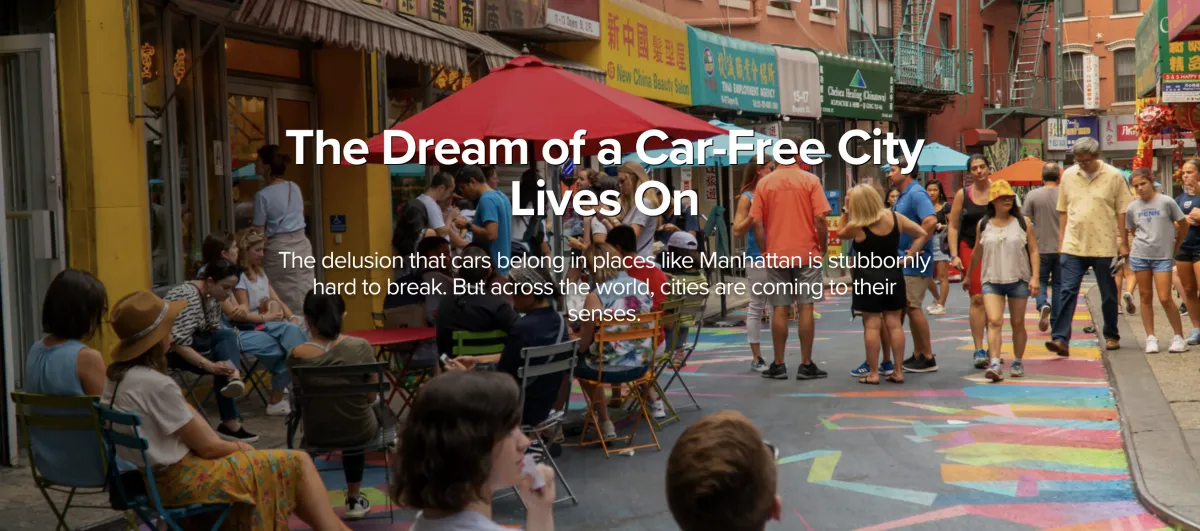
The delusion that cars belong in places like Manhattan is stubbornly hard to break. But across the world, cities are coming to their senses. Read about it HERE.
Thumbs Down - When the Rubber Meets the Road
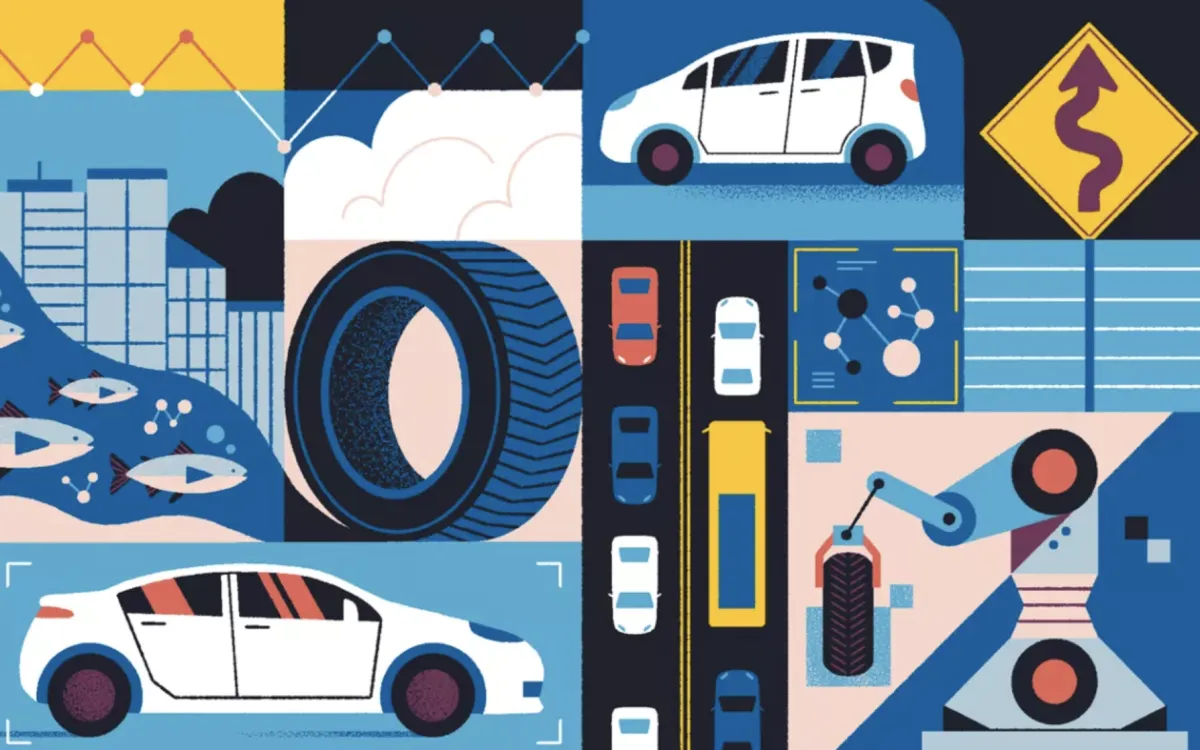
There is more to automobile pollution than what goes in the tank. Read about it HERE.
NEWSWORTHY
Thumbs up - The Dream of a Car-Free City Lives On

The delusion that cars belong in places like Manhattan is stubbornly hard to break. But across the world, cities are coming to their senses. Read about it HERE.
Thumbs Down - When the Rubber Meets the Road

There is more to automobile pollution than what goes in the tank. Read about it HERE.
FEATURED UPCOMING EVENTS
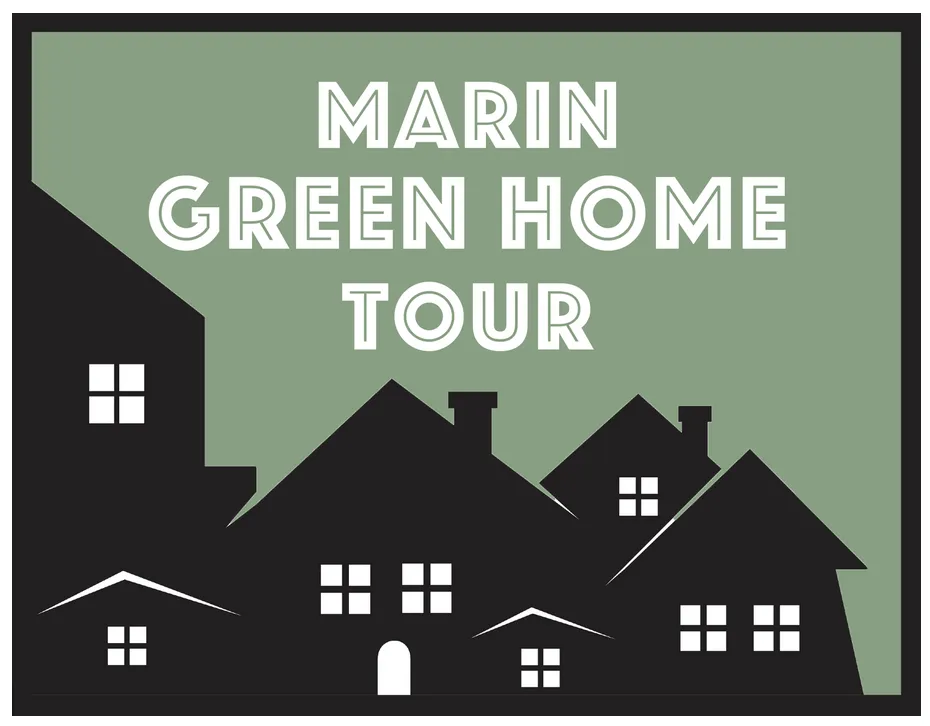
Thursday, October 24, 2024, from 6–8 PM - Marin Green Home Tour (free!)
The climate is changing. Your home should, too.
The free, virtual Marin Green Home Tour showcases how Marin homeowners are adapting their homes to combat climate change, improve air quality, generate clean energy, and move towards a safer, healthier, greener, more resilient future.
The event features short video tours of 5 Marin homes, followed by live Q&As with the homeowners. See heat pumps, induction stoves, solar and battery systems, and other strategies for maximizing clean energy.
See grey-water systems, rainwater harvesting, re-circulation pumps, and other strategies for conserving water. Learn how to access rebates and free planning services for your own green home updates, tips for renters, and whether solar remains a great investment. This event is a project of Sustainable Marin.
Learn more and register at MarinGreenHomeTour.org.
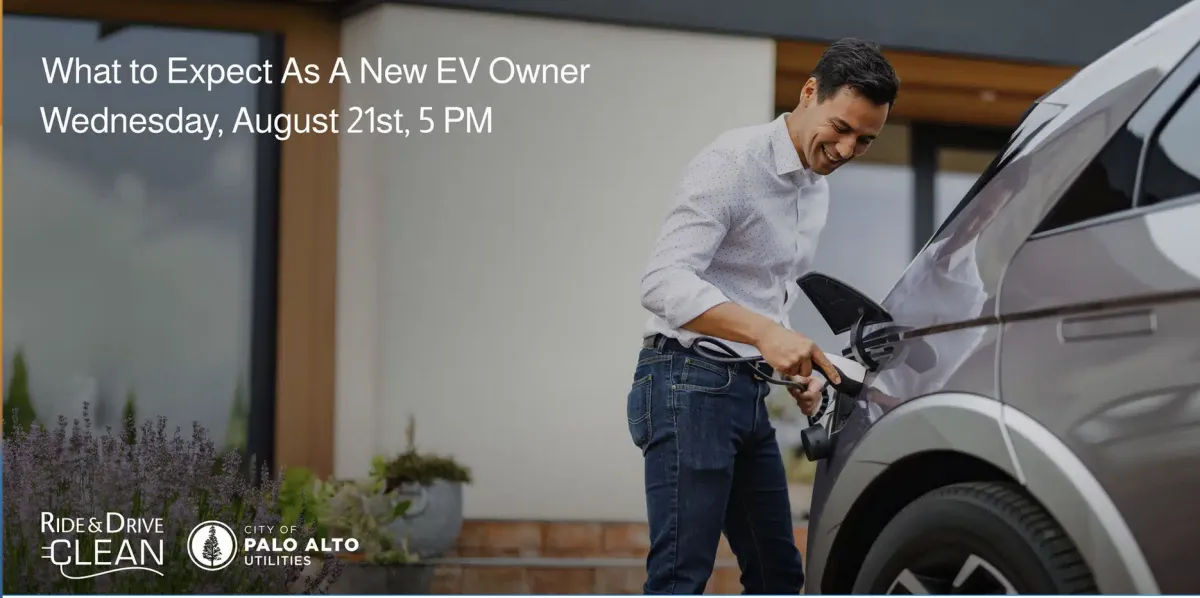
August 21 @ 5:00 PM - 6:00 PM PDT - What to Expect As A New EV Owner
Congratulations on your new EV!
Join us to review charging at home, planning for road trips, and incentives. Sponsored by City of Palo Alto Utilities.
September is transit Month
This September, join San Francisco Transit Riders and Seamless Bay Area in celebrating the buses, trains and people that make the wonderful transit system we all know and ride. During Transit Month, you can look forward to a region-wide ride contest and prizes, a San Francisco Ride-Along and Rally with the Mayor and Board of Supervisors, our Rider First Awards Ceremony, and tons more exciting, transit-themed regional activities. Find out more HERE.
FEATURED UPCOMING EVENTS

Thursday, October 24, 2024, from 6 – 8 PM - Marin Green Home Tour (free!)
The climate is changing. Your home should, too. The free, virtual Marin Green Home Tour showcases how Marin homeowners are adapting their homes to combat climate change, improve air quality, generate clean energy, and move towards a safer, healthier, greener, more resilient future.
The event features short video tours of 5 Marin homes, followed by live Q&As with the homeowners.
See heat pumps, induction stoves, solar and battery systems, and other strategies for maximizing clean energy. See grey-water systems, rainwater harvesting, re-circulation pumps, and other strategies for conserving water.
Learn how to access rebates and free planning services for your own green home updates, tips for renters, and whether solar remains a great investment. This event is a project of Sustainable Marin.
Learn more and register at MarinGreenHomeTour.org.

August 21 @ 5:00 PM - 6:00 PM PDT - What to Expect As A New EV Owner
Congratulations on your new EV!
Join us to review charging at home, planning for road trips, and incentives. Sponsored by City of Palo Alto Utilities.
September is transit Month
This September, join San Francisco Transit Riders and Seamless Bay Area in celebrating the buses, trains and people that make the wonderful transit system we all know and ride. During Transit Month, you can look forward to a region-wide ride contest and prizes, a San Francisco Ride-Along and Rally with the Mayor and Board of Supervisors, our Rider First Awards Ceremony, and tons more exciting, transit-themed regional activities. Find out more HERE.
Free Fall Online Climate Action Workshops!
Thursday, September 12 at 4:00 pm or
Wednesday, September 18 at 6:30 pm (Choose between one of two groups!)
Are you keen to do your part for the planet but not sure where to start? Join a Resilient Neighborhoods Climate Action Workshop for community support and practical advice on tackling climate change.
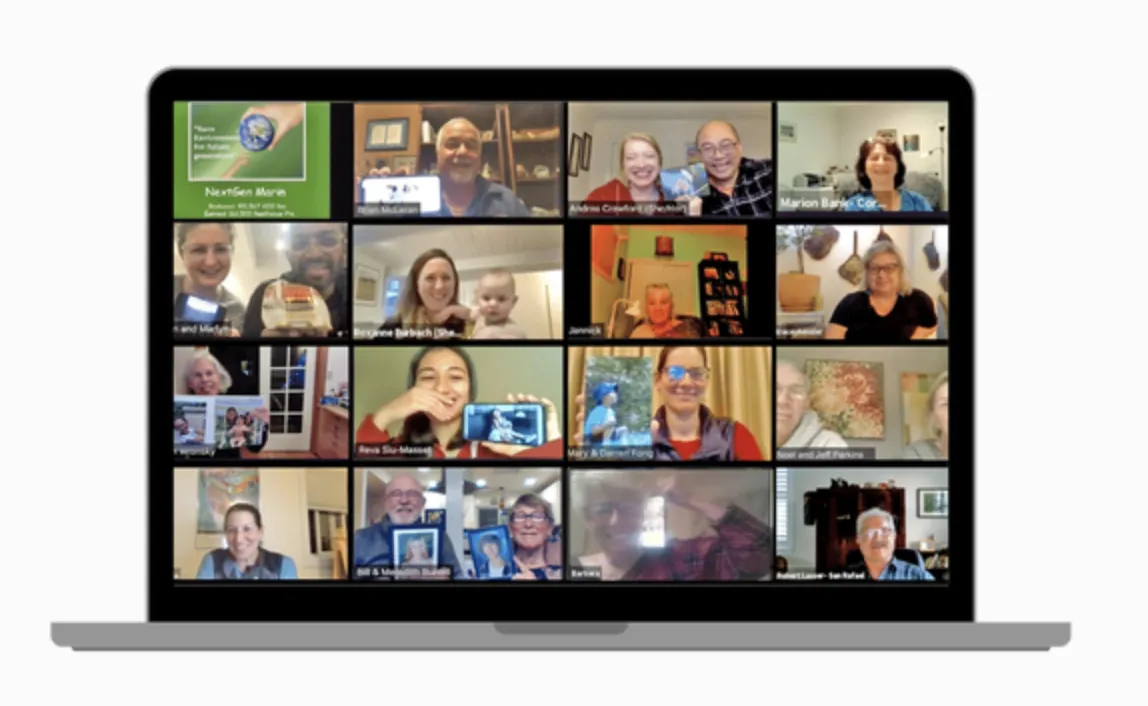
You'll learn easy and budget-friendly ways to shrink your carbon footprint, create resilient homes and communities, and prepare for climate-related emergencies.
After five meetings over ten weeks, you'll have your own Climate Action Plan and all the help you need to make it happen.
This city and county-supported program is free and is designed specifically for the Marin community.
Sign up today HERE and let's team up to protect the planet for future generations.
For more events, see the Green Change Events Calendar and the Ride Drive Clean Events Calendar.
To wrap up, as always, a HUGE THANK YOU to our Sustainable Marin Community and Supporters. It is US we do this for and it is YOU that makes what Sustainable Marin does possible.
Together, we create a tomorrow better than our yesterday, by acting TODAY.
Free Fall Online Climate Action Workshops!
Thursday, September 12 at 4:00 pm or
Wednesday, September 18 at 6:30 pm (Choose between one of two groups!)
Are you keen to do your part for the planet but not sure where to start? Join a Resilient Neighborhoods Climate Action Workshop for community support and practical advice on tackling climate change.

You'll learn easy and budget-friendly ways to shrink your carbon footprint, create resilient homes and communities, and prepare for climate-related emergencies.
After five meetings over ten weeks, you'll have your own Climate Action Plan and all the help you need to make it happen.
This city and county-supported program is free and is designed specifically for the Marin community.
Sign up today HERE and let's team up to protect the planet for future generations.
For more events, see the Green Change Events Calendar and the Ride Drive Clean Events Calendar
To wrap up, as always, a HUGE THANK YOU to our Sustainable Marin Community and Supporters. It is US we do this for and it is YOU that makes what Sustainable Marin does possible.
Together, we create a tomorrow better than our yesterday, by acting TODAY.
SUSTAINABLE MARIN.ORG
ADDRESS:
P.O. BOX 1822
ROSS, CA 94957
SUSTAINABLE MARIN IS A 501(c)3 NON-PROFIT CORPORATION, EXEMPT FROM FEDERAL TAX UNDER SECTION 501(c)(3) OF THE IRS
EIN# 94-3308034
SUSTAINABLE MARIN.ORG
ADDRESS:
P.O. BOX 1822
ROSS, CA 94957




